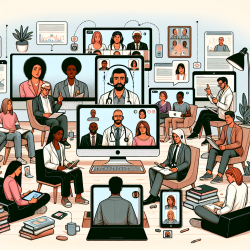Introduction
In the rapidly evolving field of speech-language pathology, staying informed about technological advancements and regulatory changes is crucial for practitioners aiming to enhance clinical outcomes. The research article titled Current State of the Regulatory Trajectory for Whole Slide Imaging Devices in the USA offers valuable insights that can be leveraged to improve therapeutic practices, particularly in pediatric settings.
Understanding Whole Slide Imaging (WSI)
Whole Slide Imaging (WSI) represents a significant advancement in digital pathology, enabling the digitization of entire glass slides into high-resolution images. This technology facilitates remote diagnosis and consultation, which is particularly beneficial in speech-language pathology for understanding the underlying medical conditions affecting speech and language development in children.
Regulatory Milestones and Implications
The FDA's recent classification of WSI devices as Class II, rather than the more restrictive Class III, marks a pivotal regulatory milestone. This reclassification simplifies the approval process for WSI devices, making them more accessible for clinical use. For speech-language pathologists, this means quicker access to diagnostic tools that can enhance the understanding of complex cases, particularly those involving neurological or structural anomalies.
Practical Applications in Speech-Language Pathology
By integrating WSI technology into speech-language pathology practice, practitioners can:
- Enhance diagnostic accuracy by collaborating with pathologists to review digital slides related to speech and language disorders.
- Improve treatment planning through a better understanding of the medical conditions affecting speech and language development.
- Facilitate remote consultations and second opinions, thereby expanding access to expert care for children in underserved areas.
Encouraging Further Research
The regulatory advancements discussed in the research article underscore the importance of ongoing research and collaboration between speech-language pathologists and other healthcare professionals. By staying informed about technological and regulatory changes, practitioners can contribute to the development of innovative solutions that improve outcomes for children with speech and language disorders.
Conclusion
The integration of digital pathology insights, such as those from WSI technology, into speech-language pathology practice holds great promise for improving diagnostic accuracy and treatment outcomes. Practitioners are encouraged to explore these advancements further and consider their implications for clinical practice.
To read the original research paper, please follow this link: Current State of the Regulatory Trajectory for Whole Slide Imaging Devices in the USA.










